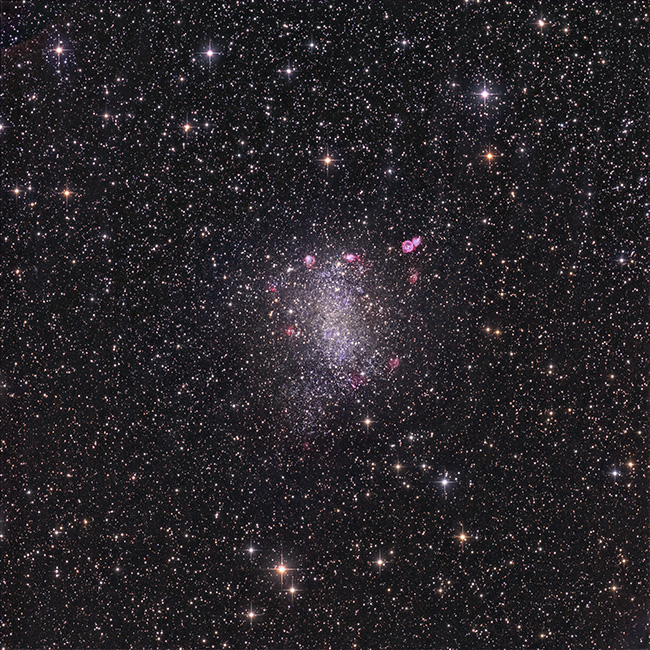
|
Date: Sept. 2023 - Location: Dark Sky Observatory (DSOC) Telescope: PlaneWave CDK 14 - Mount: Paramount-MEII - Camera: FLI 16803 Exposure: LHaRGB = 29 hours total intergration time Click on the image below to view at higher resolution. |

|
NGC 6822 was discovered in 1884 by E. E. Barnard[3] and is commonly referred to as Barnard's Galaxy. It is located in the constellation Sagittarius approximately 1.6 million light years distant[1]. It is classified as an irregular barred galaxy[1] and is similar in structure to the Small Magellanic Cloud[1]. NGC 6822 is a member of the Local Group and is the closest non-satellite galaxy to the Milky Way[1]. Numerous red H II regions are visible in the image. These are areas of active star formation[2] and are much like the Orion Nebula in our own Milky Way galaxy. A particularly impressive bubble-like H II nebular structure[2] is located in the upper right of the image above. Edwin Hubble studied NGC6822 in depth[3]. He surveyed five of the brightest of these H II regions[1]. He also identified 15 variable stars of which eleven were classed as Cepheid variables[1]. Spectroscopic studies have determined the galaxy has a low metallicity indicating a relatively low proportion of elements other than hydrogen and helium[3]. Low-metallicity celestial objects, such as NGC 6822, are of interest in the study of the evolution of stars and the life cycle of interstellar dust[3].
This image of Barnard's Galaxy is the result of a collaborative project undertaken by Steve Timmons and Donald Waid. Data capture, image calibration, and registration performed by S. Timmons. Image assembly and final processing were performed by D. Waid.
References
|